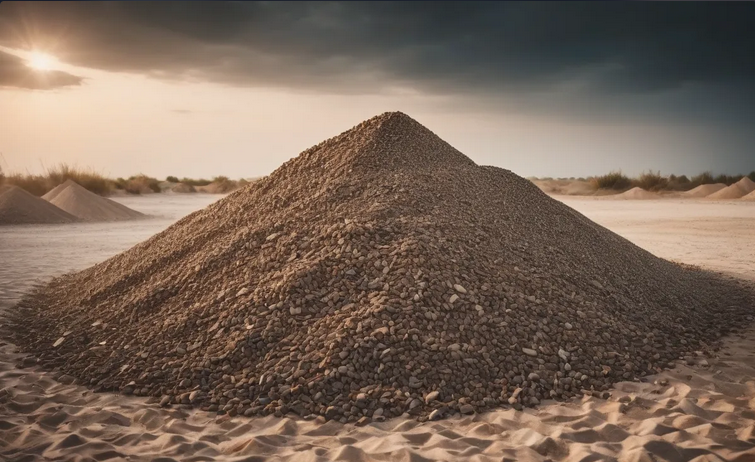Introduction
Porous pavers have gained popularity in recent years as an eco-friendly and aesthetically pleasing solution for various outdoor spaces. One crucial element in the success of a porous paver installation is the choice of the base course material. The base course serves as the foundation, supporting the pavers and allowing water to infiltrate into the ground. In this blog, we will explore the importance of selecting the right base course material for porous pavers and discuss some of the best options available.
The Role of the Base Course Material
The base course material plays a pivotal role in the performance and longevity of porous pavers. Its primary functions include:
- Load Distribution: The base course distributes the load from the pavers evenly, preventing settling and maintaining a level surface. This is crucial for areas with vehicular traffic, such as driveways, fire lanes and parking lots.
- Water Infiltration: An effective base course allows water to pass through easily, promoting efficient drainage and preventing surface runoff. This is especially important in managing stormwater and reducing the risk of flooding.
- Stability: The base course provides stability to the pavers, preventing them from shifting or settling over time. This ensures a durable and long-lasting porous pavement system.
Best Base Course Material for Porous Pavers:
While there are several excellent choices for base course materials when installing porous pavers, it’s equally important to consider locally sourced materials that are commonly used for road base construction. Here’s a look at some recommended base course materials and why they are a viable choice:
- Sandy Gravel: Often sourced from local quarries, is often used in road base construction due to its well-graded particle sizes. This material offers good drainage properties, allowing water to infiltrate easily. Its coarse nature provides stability while maintaining porosity, making it suitable for supporting the load of porous pavers. Additionally, using locally sourced sandy gravel promotes sustainability and reduces transportation costs.
- Crushed Stone Aggregate: This material is available in various sizes, is a versatile and widely used base material for porous pavers. It provides excellent drainage, stability, and load-bearing capacity. Choosing locally sourced crushed stone helps minimize environmental impact and supports regional economies.
- Open-Graded Aggregate: Open-graded aggregate, with minimal fine material, promotes rapid water infiltration, making it well-suited for areas with high water flow. Locally sourced open-graded aggregate ensures compatibility with regional soil conditions and enhances the overall porosity of the pavement system.
Base Course Materials to Avoid for Porous Pavers
While there are several excellent choices for base course materials when installing porous pavers, it’s equally important to be aware of materials that are not recommended due to their limitations in supporting the unique characteristics of porous pavements. Here’s a look at some materials to steer clear of and the reasons behind their exclusion:
- Clay Soil: Why it’s not recommended: Clay soil has poor drainage properties and tends to retain water, making it unsuitable for the porous nature of these pavements. It can lead to water pooling on the surface instead of allowing it to infiltrate into the ground. Moreover, clay soils are prone to expansion and contraction with changes in moisture levels, which can compromise the stability of the paver system.
- Recycled Concrete Fines: Why it’s not recommended: While the use of recycled materials is commendable, recycled concrete fines—small particles produced during the crushing of concrete—may contain excessive fine materials. These fines can lead to clogging, reducing the porosity of the pavement over time. The uneven particle sizes may also result in an unstable base, affecting the overall performance of the porous pavers.
- Topsoil: Why it’s not recommended: Topsoil, rich in organic matter, is not suitable for the base of porous pavers. Organic materials can break down over time, causing settlement and compromising the stability of the paver system. Additionally, topsoil’s fine texture can impede water drainage, defeating the purpose of using porous pavers for effective stormwater management.
- Crushed Limestone with Fines: Why it’s not recommended: While crushed limestone is a common base material, it can be problematic for porous pavers. The limestone solidifies over time, reducing the porosity of the base and impeding water movement.
- Exception: If Limestone is the most readily available stone in the area, there is a solution to this! Limestone can be used as the chosen base course material if at least 30% sand is mixed with it to prevent solidification and loss of porosity.
Considerations When Choosing Base Course Materials:
- Local Climate and Soil Conditions: Consider the climate and soil conditions of the project site. The base course material should be selected based on factors such as freeze-thaw cycles, soil type, and water table levels.
- Project Requirements: Evaluate the specific requirements of the project, including traffic loads, porosity goals, and aesthetic preferences. Different applications may necessitate different base course materials.
- Maintenance Considerations: Some base materials may require more maintenance than others. Consider the long-term maintenance requirements and factor them into your decision-making process.
Conclusion:
Choosing the right base course material is a critical step in the successful installation of porous pavers. Each material has its unique advantages, and the selection should be based on the specific needs of the project. By prioritizing factors such as drainage, stability, and local conditions, you can ensure a durable and effective porous pavement system that contributes to both environmental sustainability and aesthetic appeal.
